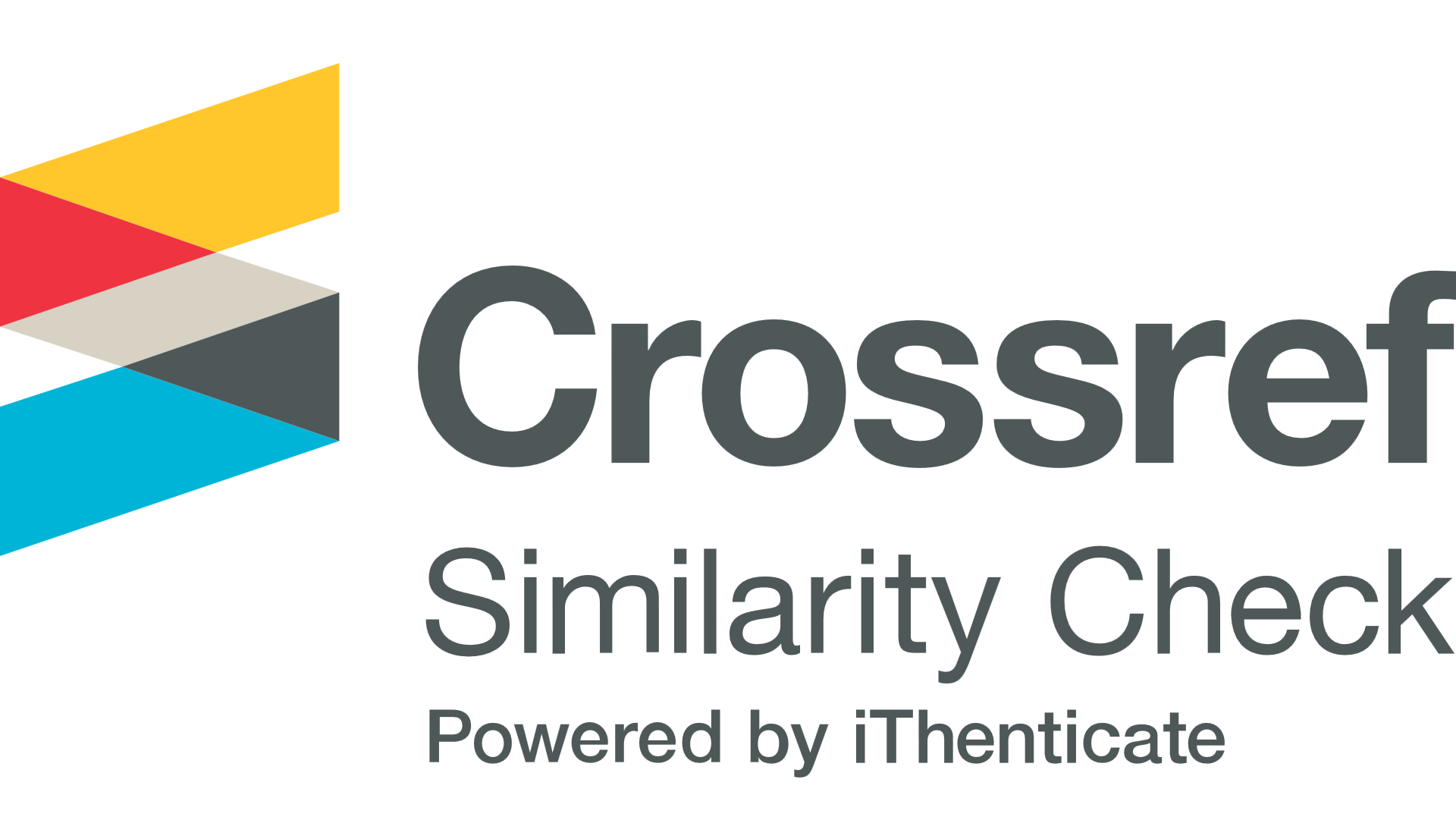Effect of NaCl replacement on physicochemical and sensory properties of the traditional cured coppa
DOI:
https://doi.org/10.18593/evid.33247Keywords:
Coppa, Sodium reduction, NaCl, KCl, AcceptanceAbstract
This study aimed to reduce sodium content in pork coppa without affecting consumer acceptance. NaCl reduction, partial replacement with KCl, and reduction in salting process time were evaluated. Six treatments were performed: Standard - 100% NaCl with a 2-day salting process and a 5-day re-salting process; T1 - a mixture of 70% NaCl/30% KCl; T2, T3, T4 - mixtures of 85% NaCl/15% KCl; T5 - 100% NaCl. T1 to T5 applied a 2-day salting process and a 2-day re-salting process. All treatments complied with Brazilian sodium guidelines. No statistically significant difference in consumer acceptance was observed. A reduction of 4 days in salting and re-salting processes maintained sensory characteristics and reduced sodium content by 50%. Even with reduced salt content, no changes in physicochemical parameters or effects on product preservation and microbiological quality were observed. NaCl reduction and replacement up to 30% KCl did not affect coppa characteristics or acceptance.
Downloads
References
Aaslyng, M. D., Vestergaard, C., & Koch, A. G. (2014). The effect of salt reduction on sensory quality and microbial growth in hotdog sausages, bacon, ham and salami. Meat Science, 96(1), 47–55. https://doi.org/10.1016/j.meatsci.2013.06.004
Aliño, M., Grau, R., Toldrá, F., Blesa, E., Pagán, M. J., & Barat, J. M. (2009). Influence of sodium replacement on physicochemical properties of dry-cured loin. Meat Science, 83(3), 423–430. https://doi.org/10.1016/j.meatsci.2009.06.022
Argemí-Armengol, I., Villalba, D., Ripoll, G., Teixeira, A., & Álvarez-Rodríguez, J. (2019). Credence cues of pork are more important than consumers’ culinary skills to boost their purchasing intention. Meat Science, 154, 11–21. https://doi.org/10.1016/j.meatsci.2019.04.001
Armenteros, M., Aristoy, M.-C., Barat, J. M., & Toldrá, F. (2012). Biochemical and sensory changes in dry-cured ham salted with partial replacements of NaCl by other chloride salts. Meat Science, 90(2), 361–367. https://doi.org/10.1016/j.meatsci.2011.07.023
Armenteros, M., Aristoy, M.-C., & Toldrá, F. (2009). Effect of sodium, potassium, calcium and magnesium chloride salts on porcine muscle proteases. European Food Research and Technology, 229(1), 93–98. https://doi.org/10.1007/s00217-009-1029-9
Association of Officiating Analytical Chemists [AOAC]. (2005). Official method of Analysis. 18th Edition, Association of Officiating Analytical Chemists, Washington DC, Method 935.14 and 992.24. - References—Scientific Research Publishing. https://www.scirp.org/(S(351jmbntvnsjt1aadkposzje))/reference/ReferencesPapers.aspx?ReferenceID=2033299
Bis, C. V., Barretto, T. L., Henck, J. M. M., Mathias, J. C., Oliveira, L. S., & Barretto, A. C. D. S. (2016). Physicochemical characteristics and sensory acceptability of ready-to-eat sliced frozen roast beef with partial reduction of sodium chloride. Food Science and Technology, 36(2), 286–289. https://doi.org/10.1590/1678-457X.0056
Box, G. E. P., & Draper, N. Richard. (1987). Empirical Model-Building and Response Surfaces.
Brasil. (2019). Agência Nacional de Vigilância Sanitária [ANVISA]. Resolução Diretoria Colegiada—RDC no 272, de 14 de março de 2019. Estabelece os aditivos alimentares autorizados para uso em carnes e produtos cárneos. https://www.in.gov.br/web/guest/materia/-/asset_publisher/Kujrw0TZC2Mb/content/id/67378977/do1-2019-03-18-resolucao-da-diretoria-colegiada-rdc-n-272-de-14-de-marco-de-2019-67378770
Brasil. (2022a). Ministério da Saúde [MS], Agência Nacional de Vigilância Sanitária [ANVISA]. INSTRUÇÃO NORMATIVA - IN No 161, DE 1o DE JULHO DE 2022. Estabelece os padrões microbiológicos dos alimentos. Diário Oficial Da União Edição 126, Seção 1, Página 235.
Brasil. (2022b). Ministério da Saúde [MS], Agência Nacional de Vigilância Sanitária [ANVISA]. RESOLUÇÃO - RDC No 724, DE 1o DE JULHO DE 2022. Dispõe sobre os padrões microbiológicos dos alimentos e sua aplicação. Diário Oficial Da União Edição 126, Seção 1, Página 205.
Bruns, R. E., Scarminio, I. S., & Neto, B. de B. (2005). Statistical Design – Chemometrics, Volume 25, In: Data Handling in Science and Technology (B. B. Neto, I. S. Scarminio, & R. E. Bruns, Eds.).
Cluff, M., Steyn, H., Charimba, G., Bothma, C., Hugo, C. J., & Hugo, A. (2016). The chemical, microbial, sensory and technological effects of intermediate salt levels as a sodium reduction strategy in fresh pork sausages. Journal of the Science of Food and Agriculture, 96(12), 4048–4055. https://doi.org/10.1002/jsfa.7602
Delgado-Pando, G., Fischer, E., Allen, P., Kerry, J. P., O’Sullivan, M. G., & Hamill, R. M. (2018). Salt content and minimum acceptable levels in whole-muscle cured meat products. Meat Science, 139, 179–186. https://doi.org/10.1016/j.meatsci.2018.01.025
Di Domenico, J., Machado-Lunkes, A., Prado, N. V., Weber, C. I., & Lucchetta, L. (2020). Reduction of sodium content in pork coppa: Physicochemical, microbiological and sensory evaluation. Scientia Agricola, 78(6). https://doi.org/10.1590/1678-992x-2020-0153
Domínguez, R., Munekata, P. E., Cittadini, A., & Lorenzo, J. M. (2016). Effect of the partial NaCl substitution by other chloride salts on the volatile profile during the ripening of dry-cured lacón. Grasas y Aceites, 67(2), e128. https://doi.org/10.3989/gya.0505152
Dutcosky, S. D. (2019). Análise Sensorial de Alimentos 5a Edição (Champagnat - Pucpress, Ed.).
Ferreira, P. C., de Abreu Tonani, K. A., Julião, F. C., Cupo, P., Domingo, J. L., & Segura-Muñoz, S. I. (2009). Aluminum Concentrations in Water of Elderly People’s Houses and Retirement Homes and Its Relation with Elderly Health. Bulletin of Environmental Contamination and Toxicology, 83(4), 565–569. https://doi.org/10.1007/s00128-009-9791-8
Fieira, C., Marchi, J. F., Marafão, D., & Da Trindade Alfaro, A. (2018). The impact of the partial replacement of sodium chloride in the development of starter cultures during Italian salami production. Brazilian Journal of Food Technology, 21. https://doi.org/10.1590/1981-6723.03615
Gan, X., Li, H., Wang, Z., Emara, A. M., Zhang, D., & He, Z. (2019). Does protein oxidation affect proteolysis in low sodium Chinese traditional bacon processing? Meat Science, 150, 14–22. https://doi.org/10.1016/J.MEATSCI.2018.10.007
Gaudette, N. J., & Pietrasik, Z. (2017). The sensory impact of salt replacers and flavor enhancer in reduced sodium processed meats is matrix dependent. Journal of Sensory Studies, 32(1), e12247. https://doi.org/10.1111/joss.12247
Haddad, G. de B. S., Moura, A. P. R., Fontes, P. R., Cunha, da S. de F. V., Ramos, A. de L. S., & Ramos, E. M. (2018). The effects of sodium chloride and PSE meat on restructured cured-smoked pork loin quality: A response surface methodology study. Meat Science, 137, 191–200. https://doi.org/10.1016/j.meatsci.2017.11.030
Iamarino, L. Z., Oliveira, de M. da C., Antunes, M. M., Oliveira, de M., Rodrigues, R. O., Zanin, C. I. de C. B., Schimile, M., & Lima, A. A. de L. (2015). Nitrito e nitratos em produtos cárneos enlatados e/ou embutidos. Gestão Em Foco, 246–251.
Inguglia, E. S., Zhang, Z., Tiwari, B. K., Kerry, J. P., & Burgess, C. M. (2017). Salt reduction strategies in processed meat products – A review. Trends in Food Science and Technology, 59, 70–78. https://doi.org/10.1016/j.tifs.2016.10.016
Instituto Brasileiro de Defesa do Consumidor [IDEC]. (2014). Redução de sódio em alimentos: Uma análise dos acordos voluntários no Brasil. https://idec.org.br/publicacao/reducao-de-sodio-em-alimentos-uma-analise-dos-acordos-voluntarios-no-brasil
Koç, Ş., & Baysal, S. S. (2019). Salt, Hypertension, and the Lens. Metabolic Syndrome and Related Disorders, 17(3), 173–181. https://doi.org/10.1089/met.2018.0117
Koniecko, E. S. (1985). Handbook of meat analysis. 289.
Li, F., Zhuang, H., Qiao, W., Zhang, J., & Wang, Y. (2016). Effect of partial substitution of NaCl by KCl on physicochemical properties, biogenic amines and N-nitrosamines during ripening and storage of dry-cured bacon. Journal of Food Science and Technology, 53(10), 3795–3805. https://doi.org/10.1007/s13197-016-2366-x
Nilson, E. A. F., Spaniol, A. M., Gonçalves, V. S. S., Moura, I., Silva, S. A., L’Abbé, M., & Jaime, P. C. (2017). Sodium Reduction in Processed Foods in Brazil: Analysis of Food Categories and Voluntary Targets from 2011 to 2017. Nutrients, 9(7). https://doi.org/10.3390/NU9070742
O’ Neill, C. M., Cruz-Romero, M. C., Duffy, G., & Kerry, J. P. (2018). Shelf life extension of vacuum-packed salt reduced frankfurters and cooked ham through the combined application of high pressure processing and organic acids. Food Packaging and Shelf Life, 17, 120–128. https://doi.org/10.1016/j.fpsl.2018.06.008
Pan American Health Organization [PAHO]. (2015). Regional Targets on Salt Reduction. https://www3.paho.org/hq/index.php?option=com_content&view=article&id=10399:regional-targets-salt-reduction&Itemid=41253&lang=en
Pretorius, B., & Schönfeldt, H. C. (2018). The contribution of processed pork meat products to total salt intake in the diet. Food Chemistry, 238, 139–145. https://doi.org/10.1016/j.foodchem.2016.11.078
Price, J. F., Schweigert, B. S., & Fuente, la J. L. de. (1994). Ciencia de la carne y de los productos cárnicos.
Stanley, R. E., Bower, C. G., & Sullivan, G. A. (2017). Influence of sodium chloride reduction and replacement with potassium chloride based salts on the sensory and physico-chemical characteristics of pork sausage patties. Meat Science, 133, 36–42. https://doi.org/10.1016/j.meatsci.2017.05.021
Taddei, R., Giacometti, F., Bardasi, L., Bonilauri, P., Ramini, M., Fontana, M. C., Bassi, P., Castagnini, S., Ceredi, F., Pelliconi, M. F., Serraino, A., Tomasell, F., Piva, S., Mondo, E., & Merialdi, G. (2020). Effect of production process and high-pressure processing on viability of Listeria innocua in traditional Italian dry-cured coppa. Italian Journal of Food Safety, 9(2), 104–109. https://doi.org/10.4081/IJFS.2020.9133
Tejada, L., Buendía-Moreno, L., Álvarez, E., Palma, A., Salazar, E., Muñoz, B., & Abellán, A. (2021). Development of an Iberian Chorizo Salted With a Combination of Mineral Salts (Seawater Substitute) and Better Nutritional Profile. Frontiers in Nutrition, 8. https://doi.org/10.3389/fnut.2021.642726
Toldrá, F. (2007). Sodium reduction in foods: A necessity for a growing sector of the population. Trends in Food Science & Technology, 18(11), 583. https://doi.org/10.1016/J.TIFS.2007.07.005
Triki, M., Khemakhem, I., Trigui, I., Ben Salah, R., Jaballi, S., Ruiz-Capillas, C., Ayadi, M. A., Attia, H., & Besbes, S. (2017). Free-sodium salts mixture and AlgySalt® use as NaCl substitutes in fresh and cooked meat products intended for the hypertensive population. Meat Science, 133, 194–203. https://doi.org/10.1016/J.MEATSCI.2017.07.005
Vanderzant, C., Splittstoesser, D. F., & APHA, A. P. H. A. (1992). Compendium of methods for the microbiological examination of foods (American Public Health Association, Ed.; 3 ed).
Vignoto, V. K. C., Carmo, do L. G., & Wosiacki, S. R. (2010). Efeito da maturação da carne na qualidade sanitária do jerked beef. Publicatio UEPG - Ciencias Exatas e Da Terra, Agrarias e Engenharias, 16(2), 89–95. https://doi.org/10.5212/publ.exatas.v.16i2.0004
Wong, K. M., Corradini, M. G., Autio, W., & Kinchla, A. J. (2019). Sodium reduction strategies through use of meat extenders (white button mushrooms vs. Textured soy) in beef patties. Food Science & Nutrition, 7(2), 506–518. https://doi.org/10.1002/FSN3.824
World Health Organization [WHO]. (2016). Salt reduction—Fact sheet. http://www.who.int/mediacentre/factsheets/fs393/en/
Wu, H., Zhuang, H., Zhang, Y., Tang, J., Yu, X., Long, M., Wang, J., & Zhang, J. (2015). Influence of partial replacement of NaCl with KCl on profiles of volatile compounds in dry-cured bacon during processing. Food Chemistry, 172, 391–399. https://doi.org/10.1016/j.foodchem.2014.09.088
Yotsuyanagi, S. E., Contreras-Castillo, C. J., Haguiwara, M. M. H., Cipolli, K. M. V. A. B., Lemos, A. L. S. C., Morgano, M. A., & Yamada, E. A. (2016). Technological, sensory and microbiological impacts of sodium reduction in frankfurters. Meat Science, 115, 50–59. https://doi.org/10.1016/J.MEATSCI.2015.12.016
Published
How to Cite
Issue
Section
License
Copyright (c) 2024 Evidence

This work is licensed under a Creative Commons Attribution-NonCommercial 4.0 International License.
Copyright Statement
The authors retain the copyrights and grant the Journal the right of the first publication, with the work being simultaneously licensed by a Creative Commons - Attribution - Non-Commercial 4.0 International License.

































